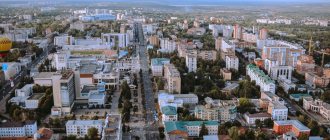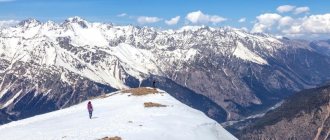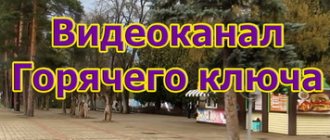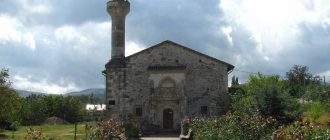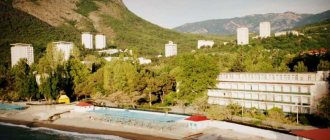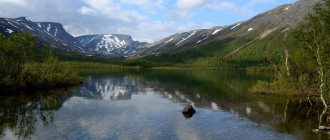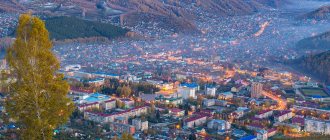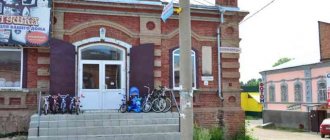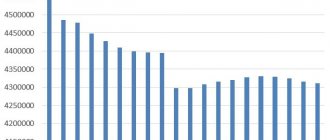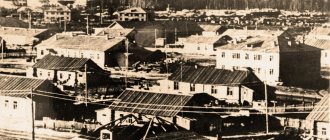The Altai Republic (in Altai, Altai Republic) is a subject of the Russian Federation, part of the Siberian Federal District. The Altai Republic is usually called the Altai Mountains. The administrative center of the region is the city of Gorno-Altaisk. The distance from Gorno-Altaisk to Biysk is about 98 km, to Barnaul – 260 km, to Novosibirsk – 450 km. The administrative-territorial division of the Altai Republic includes one city and 10 districts.
Altai Republic on the map.
Geographical Altai is located in the south of Western Siberia, in the very center of Eurasia. On its territory, which is part of the Russian Federation, there are two administrative regions: the Altai Republic and the Altai Territory. The climate here is sharply continental. The Altai Republic is located in the time zone MSK+4 (UTC+7), covering an area of 92,903 sq. km. and borders:
- In the West, North-West, North - with the Altai Territory.
- In the Northeast - Kemerovo region.
- In the East – the Republic of Tyva, the Republic of Khakassia and.
- In the South - Mongolia (Bayan-Ulgii aimag) and China (Xinjiang Uyghur Autonomous Region).
- In the South-West - Kazakhstan (East Kazakhstan region).
What holiday is it today?
January 22, 2022, Saturday
Today are holidays, events: Day of Unification of Ukraine Tomorrow: Premiere of the opera “Eugene Onegin” at the Bolshoi Theater
Today is the Orthodox holiday: Martyr Polyeuctus. St. Philip, Metropolitan of Moscow and All Russia, wonderworker... Tomorrow: St. Gregory, Bishop of Nyssa. Venerable Markian the presbyter. Venerable Dometian, Bishop of Melitino. St. Paul of Komel, wonderworker, student of St. Sergius of Radonezh. Saint Theophan, the Recluse of Vyshensky...
Today is a national holiday: St. Philip's Day... Tomorrow: Gregory - Summer Guide...
Famous people associated with the Altai Republic
- Gurkin, Grigory Ivanovich (1870-1937) - Altai artist, student of I. I. Shishkin, head of Karakorum, the state education of the Altai people in 1917-1919.
- Meri, Arnold Konstantinovich (1919-2009) - Estonian statesman and socio-political figure, Hero of the Soviet Union. In 1956-1960 he worked as a teacher of political economy at the Gorno-Altai Pedagogical Institute (now Gorno-Altai State University).
- Jaruzelski, Wojciech Witold (born 1923) - Polish statesman, general, first president of Poland. In 1940-1943 he was in exile in Turochak.
Seasons
Seasons, four periods of the year (spring, summer, autumn and winter) characterized by certain average temperatures. The period during which the Sun passes through one of these sectors is called the season. Spring in the Northern Hemisphere and autumn in the Southern Hemisphere begin when the Sun passes through the initial circle of declination and its right ascension is 0° (vernal equinox). Summer in the Northern Hemisphere and winter in the Southern Hemisphere occur when the sun's right ascension is 90° (summer solstice). Autumn in the Northern Hemisphere and spring in the Southern Hemisphere begin when the sun's right ascension is 180° (autumnal equinox). The beginning of winter in the Northern Hemisphere and summer in the Southern Hemisphere is considered to be the winter solstice, when the direct ascension of the Sun is 270°... Next: Seasons. Russian folk calendar. Monthly words...
Geographical position
The relief of the Altai Republic is expressed in large morphological steps: low mountains, middle mountains, high mountains. Absolute heights - from 350 to 4 thousand m. The relief reflects the influence of glacial, gravitational, erosion, and karst processes. A great contrast in the highlands is provided by alpine ridges with sharp peaks, chasms, cirques, eternal snow and glaciers. The ridges are separated by intermountain basins: Chuyskaya, Kuraiskaya, Dzhulukolskaya, Uimonskaya, Abaiskaya. The dominant heights are in the Katunsky ridge and the Tybyn-Bogdo-Ola massif. The highest point is Mount Belukha (4,506 m). Altai is a global watershed between the rivers of the closed Central Asian and Arctic basins. Many rivers originate here. The largest of them are the Ob (with its sources Biya and Katun) and the Irtysh. There are more than 7 thousand lakes in the mountains. The main rivers of the region flow in the northern and northwestern direction and, together with their tributaries, form an extensive hydrographic network of more than 20 thousand watercourses with a total length of 60 thousand km. The rivers of the Altai Mountains have large reserves of hydropower. Over a larger distance, they are typically mountainous in nature - with slopes of up to 130 m/km, stormy cascades cutting through rocky ledges.
The geographical position of the Altai Republic is determined by its remoteness from the oceans, proximity to the taiga zone of Siberia, steppes, semi-deserts, deserts of Central and Central Asia, which determines the sharply continental nature of the climate. The range of average annual temperatures in January and July reaches 48°C. The average temperature in January is from minus 16 to minus 18°C, in July - from plus 14 to plus 18°C. The pole of cold is located in the Chui intermountain basin, where the temperature was recorded at minus 62°C. At altitudes above 4 thousand m, the average July temperature is minus 5°C. The territory is influenced by the air masses of the Atlantic and Arctic, which come here greatly transformed. In winter, the western spur of the Mongolian, or Asian, anticyclone dominates. Precipitation is unevenly distributed. The maximum occurs in the warm season: 75-80% of the annual amount. The annual precipitation ranges from 79-127 (Khovd, Kosh-Agach) to 1 thousand mm (on the western windward slopes of the ridges). In the Central Altai ranges, the annual precipitation reaches 1.5-2.5 thousand mm.
Folk calendar about every day
Every day one season always replaces another and this determines a person’s way of life. In connection with this, a folk calendar was formed in which there were practically no nameless, unmarked days. Every day was special, had its own purpose. All this was determined by climate conditions and astrological phenomena.
A calendar is a system for counting periods of time. The first calendars arose a long time ago, in ancient times, because there was a need to measure time. The word calendar comes from the Latin words caleo - to proclaim and calendarium - debt book. This is due to the fact that in Ancient Rome the beginning of each month was especially proclaimed, and because it was customary to pay debts on the first day of the month. Different peoples counted time differently. Some calendars are based on the changing phases of the moon - lunar calendars; in others - the change of seasons - sunny; in others, the length of the year was coordinated with the change of seasons, and the counting of months was associated with the phases of the Moon. Such calendars are called lunisolar.
In Rus', the calendar was called a monthly calendar. Every day, the month book covered the entire year of peasant life, “describing” day by day, month after month, where each day had its own holidays or weekdays, customs and superstitions, traditions and rituals, natural signs and phenomena. The cyclical nature of the calendar is reminiscent of human life, where spring is youth, summer is heyday, autumn is the time of harvesting fruits (it’s good if there are some, otherwise you can live your life without collecting fruits), winter is the time of wisdom and peace. This cyclicality and rhythm determined the way of life of the farmer. The folk calendar was an agricultural calendar, which was reflected in the names of the months, folk signs, rituals and customs. Even the determination of the timing and duration of the seasons is associated with real climatic conditions. Hence the discrepancy between the names of the months in different areas... Next: Folk calendar...
Sports tourism in Altai
If in the mountain autonomy entertainment is mainly associated with mountain trekking of varying difficulty, mountaineering and speleology, then the lowland Altai offers other active leisure as an addition. Competitions in sport fishing or mushroom picking. They have become a custom here... Hiking through taiga and steppe terrain is practiced (there are many points for “wild” bivouacs and camping) and paragliding (over the most textured landscapes). Several clubs and tour operators will organize everything for you. During muddy times, guests will be treated to a jeep safari, and in winter there will be snowmobile or dog racing...
Horse tourism in Altai is developed in both of its regions. The routes of the tourist “cavalry” pass through all the Altai mountains, forests and fields. In the space of both described pieces of the Fatherland, there are organizations “Altai-tour”, “Arcadia”, “Sky of Altai”, “Expert” and “Altyn-at”. Another journey could take several days. Therefore, start small - practice on the closest (to one of the bases) trails.
Water tourism in Altai affects both the 4th and 22nd regions, being associated with such water “arteries” as Katun, Biya, Alei, Chuya, and Chulyshman. In the last of these areas, watermen are not afraid to raft along the Ob River. Group trips (kayaks, rafts, canoes) are organized. Today, many people are playing around with homemade rafts.
Fishing calendar for every day
The fishing calendar should not be taken as an absolutely indisputable truth. Fish biting is greatly influenced by a whole range of natural factors, as well as the influence on the nature of man himself. You must not forget that the fish’s bite depends and is determined not only by the calendar dates and biological cycles of their life, reflected in the calendar, but also, no less, by the state of their habitat; the bite also depends on weather conditions: air and water temperatures, cloudiness, wind direction and strength, etc... Next: Fishing calendar...
Traveling around Altai: a detailed guide
Altai is a huge region with rich natural potential, capable of surprising the most sophisticated and spoiled tourists with its sights. Travel routes in Altai are extremely diverse. The region has everything for an intense holiday and active tourism - high snowy peaks, alpine meadows, stunning forests, vast steppes, cave complexes and places of power. Going here in any direction, you can’t go wrong, since there is no such abundance of natural monuments and cultural and historical attractions in any region of Southern Siberia.
Orthodox calendar about every day
Orthodox calendar: Orthodox, Church and Christian holidays.
The church year is an alternation of weekdays and holidays. On weekdays, a person is called to work “by the sweat of his brow to earn his bread.” Holidays are given in order to feel liberation, to rise above the bustle and routine of the world, to feel involved in the highest of worlds, “where there are no illnesses, sorrows and sighs, but endless life.” Since ancient times, holiday cycles have been associated with the seasons. The pagans associated them with the worship of the forces of nature, the cult of which in the Old Testament was replaced by gratitude to the Creator for the universe. And although the connection between holidays and the seasons has not completely lost its power, since God is present in everything, in the plant and animal world, in human works, it nevertheless faded into the background, giving way to a spiritual foundation built on the Sacred Scriptures. The history of Orthodox holidays dates back to the times of the Old Testament. Each of the Orthodox holidays is dedicated to the remembrance of the most important events in the life of Jesus Christ and the Mother of God, as well as the memory of saints... Next: Orthodox calendar...
Minerals
The republic's mineral resources are diverse in terms of types of minerals. Unique deposits of rare, non-ferrous and precious metals have been identified here. Deposits of marble, granite, iron and brown coal have been explored and prepared for exploitation. Deposits of wollastonite, gypsum, various mineral pigments, mineral and medicinal table waters, and medicinal mud are under study. The largest primary gold deposit is the Sinyukhinskoye gold-copper deposit on the Biysk-Katun watershed in the Choysky district (the Vesely mine, which produces more than 90% of the annual gold production of the Altai Republic).
The northern part of the region is the most promising for ore gold. In the early 1980s. in the southeastern part of the Altai Republic (with continuation to Mongolia), deposits of complex silver-bismuth-antimony ores were discovered. The main silver deposit is Ozernoye. In the southeast of the Altai Mountains, mainly in the Kosh-Agach region, deposits of rare metals are concentrated: mercury, tungsten, molybdenum, known since the 1940s and 1950s. In addition, there are deposits of lithium, tantalum, and cobalt. Mercury before the 1980s was considered the main mineral resource of the Altai Mountains. Since the Great Patriotic War, the Aktash mine has been operating, where more than 3 thousand tons of mercury were extracted over 30 years. In the early 1990s. Ore mining was stopped, and the mercury plant switched to processing secondary raw materials. The largest are the Karakul gold-bismuth-cobalt, Kalgutinskoe tungsten, Alakhinskoe lithium, Kholzunskoe and Timofeevskoe iron ore deposits. Manganese ore reserves have been identified; The Taldy-Dyurgunskoye and Pyzhinskoye brown coal deposits are considered large. Reserves of building materials are also concentrated on the territory of the republic; deposits of marble and granite are partially developed. Among multi-purpose minerals, non-traditional wollastonite raw materials (Lebedskoye and Sinyukhinskoye deposits) take first place, used in the production of special radioceramics, earthenware, porcelain, sanitary products, special filters, protective coatings, and paints.
Russian folk calendar for every day
The word “sign” comes from the word “notice”, i.e. observe. As a result of observing what happens around a person every day, he accumulates life experience. This knowledge was passed down from generation to generation, carefully preserved and people trusted it as a sacred book. Many signs have come to us from the depths of centuries without losing their knowledge. Each of us is free to choose: to dismiss all this as an absurd superstition or to take a closer look at the signs and take the centuries-old experience of generations more seriously. Most of us, when taking exams, ask them to scold them, boasting about some kind of good fortune or luck, spit so as not to jinx them or knock on wood, take a detour if a black cat crossed the road, are afraid of the number 13 and much more. And who among us does not have lucky things, numbers? Who has never resorted to the help of fate at least once in their life, who has not believed in secrets? It’s as if everything connected with signs is hidden somewhere deep in our subconscious. Often we remember them mechanically, unconsciously, or just as a joke. But, undoubtedly, the signs contain a lot of accurate knowledge and practical wisdom of our ancestors. They cover all the characteristic, often difficult to perceive, natural phenomena. Signs have preserved a lot of what was in old folk holidays and customs; they help predict the weather, grow crops... Next: Folk signs...
Coat of arms and flag of the Altai Republic
The state emblem of the Altai Republic was approved on June 24, 1993, updated on April 24, 2003. The blue-blue circle - a symbol of the eternity of the blue sky of Altai - is bordered by a narrow golden stripe. At the top of the circle is depicted the three-headed peak of one of the highest mountains in Central Asia, Belukha - Yuch-Sumera, symbolizing the beauty and power of the native land; in the center - a griffin (Kan-Kerede) with the head and wings of a bird and the body of a lion, personifying the sacred solar bird, guarding peace, happiness, the wealth of the native land, the patroness of animals, birds and nature; in the lower part there is an ornamental image of the two largest rivers of Altai - the Biya and Katun with their tributaries; between them there is a tripod - a hearth - a symbol of the Motherland, the fortress and eternity of the home; wavy lines under the tripod are a symbol of Teletskoe Lake Altyn-Kel.
The state flag of the Altai Republic was approved on July 2, 1992, updated on March 24, 2003. The flag is a rectangular panel of 4 horizontal stripes: the top is white, the bottom is blue, narrow stripes are white and blue. The ratio of the flag's width to length is 1:2. Blue stripes are a symbol of purity, the sky, mountains, rivers and lakes of Altai. White stripes represent eternity, the desire for revival, love and harmony of the peoples of the republic.
Holiday calendar, dates and events of the year
All state and professional holidays in Russia, including significant World and International holidays, and other equally interesting holidays and events about every day.
The holiday has always kept pace with the history of mankind. Social time can be divided into three types: everyday life (weekdays), weekends and holidays. Everyday life is a series of practices repeated day after day and every day (work). Weekends are regular breaks from the rush of everyday life. It is believed that on weekends a person should restore his strength after working days. Day off, non-working day. A holiday is a day of celebration established in honor or in memory of someone or something. A day or series of days celebrated by the church in memory of a religious event or saint... Next: Calendar...
Natural disasters
On September 27, 2003, the most destructive earthquake in the last few decades occurred in six southern regions of the Altai Republic. At the epicenter, the intensity of the earthquake reached 8-9 points, the strength of the main shock was magnitude 7.3 on the Richter scale. After this, a series of new earthquakes of lesser magnitude were recorded in the republic. Tremors were recorded even in the Novosibirsk region, Krasnoyarsk Territory and Eastern Kazakhstan.
The greatest destruction occurred in the Kosh-Agachsky, Ulagansky, Shebalinsky and Ongudaysky regions of the Altai Republic. There were no casualties (only a few people received minor injuries), but the earthquake destroyed and damaged over 1.8 thousand (according to other sources - about 500) residential buildings, in which more than seven thousand people lived, as well as administrative buildings (schools, hospitals) . The damage caused to the republic amounted to more than 1 billion rubles.
Prayer book, Orthodox prayers for every day
Prayer is the most powerful means for healing all illnesses - both physical and mental. Prayers can be laudatory or grateful, petitionary and repentant. If we have offended God, sinned, we must ask Him for forgiveness, that is, repent. Such prayers are called repentant prayers. If everything is fine with us, if we and our loved ones are healthy and prosperous, if we have a place to live, something to wear, something to eat, we must glorify and thank God for this. Such prayers are called praise or thanksgiving. If some misfortune, illness, trouble or need happens, you need to ask God for help. Such prayers are called petitionary... Next: Orthodox prayers...
Zodiac, astrological, eastern calendar. Zodiac signs
In ancient times, to establish the calendar, priests used knowledge of the positions of all the planets. Before the reform of Peter 1, the New Year was celebrated on the Day of the Autumn Equinox. On this day, according to ancient legend, the most peaceful treaty was concluded between the Great Race (ancient Slavs) and the Great Dragon (ancient Chinese) and it was approximately 7518 years ago... For the ancient Slavs, the calendar month corresponded to the lunar cycle from new moon to new moon, taking into account such Thus, the relationship of the entire annual cycle with astronomical and natural phenomena. There was no coherent calendar system. The main natural phenomena are still considered to this day to be the days of the solar equinox and solstice - the Slavic holidays Maslenitsa, Kupala, Ovsen and Kolyada. But during the time of Peter 1, all ancient Slavic calendars were abolished and a new Western European calendar from the Nativity of Christ (Julian calendar) was introduced, while the beginning of the calendar was moved to January 1. The Julian calendar (old style) did not take leap days into account and accumulated one extra day every 128 years. After the October Revolution in 1918, the Gregorian calendar (new style) was introduced in Russia, according to which an amendment of 13 days was introduced. The calendar of the ancient Slavs was based on two planets: the Sun and the Moon. And now they don’t use anything at all. The calendar has become static. There is no such thing as the calendar, it turns out, resting on some planet. Nobody even knows about it. There are just some standard numbers, there are months and holidays. The calendar is based on the Sun and Moon. Why is this so? Because these two luminaries influence the Earth. The Earth revolves around the Sun, and the Moon revolves around the Earth. And these two luminaries create the atmosphere on the planet. From here the calendar is built... Next: Astrological calendar...
Russian language and linguistics
It's time to continue the geographical notes. A little earlier I wrote about St. Petersburg, now I’ll tell you how the Altai Territory and the Altai Republic differ. At the end of the article I will say what is meant by the word “Altai”.
Why do you need to remember this difference?
Among toponyms (names of geographical objects) there are many names that are similar in spelling or pronunciation. For example, Nizhny Novgorod and Veliky Novgorod. The first is the administrative center of the Nizhny Novgorod region, the second - the Novgorod region. And there are a lot of such examples in Russia alone. Moreover, the distance between these objects that are similar at first glance can be a thousand or more kilometers!
Someone will have a question: is it really necessary to remember all this if we don’t live there and aren’t going there. I often see similar arguments on social networks. Like, what's the difference? However, just look on the Internet for a story about how a married couple from Switzerland was going to come to the 2022 FIFA World Cup, which, as we remember, was held in Russia. When booking a hotel on the Internet, a husband and wife confused Rostov-on-Don with Rostov the Great and ended up arriving in the wrong place. They were lucky that they first got to a Russian wedding, and then they managed to contact the 112 rescue service. As a result, the incident was resolved successfully, and foreigners were able to attend the matches.
And how many such curiosities! Okay, they can be forgiven, Russia is an unknown country for many, but here, too, Austria can be confused with Australia, Belgorod with Belgrade, and Krasnoyarsk with Krasnodar. And in order to avoid getting into such situations, it is better to study such geographical subtleties in advance.
So let's get started. How does the Altai Territory differ from the Altai Republic?
Yes to a lot of people.
General information about the two regions
Altai Territory is Western Siberia, the Siberian Federal District. The capital is Barnaul. Formed on September 28, 1937. Area - 167,996 km², population - 2,317,153 people. It borders with the Altai Republic in the east. The largest cities: Barnaul, Biysk, Rubtsovsk, Novoaltaisk, Zarinsk, Kamen-on-Obi.
The Altai Republic is also Western Siberia. However, the capital is different - Gorno-Altaisk. The unofficial name of the republic is Gorny Altai. It borders on the Altai Territory in the west. The area of the Altai Republic is 92,903 km², and the population is 220,181 people, that is, almost 10 times less.
The Ak-kem valley is higher than Lake Akkem. Source: flickr.com Author: Tatters
Thus, if we look at a map of Russia, we will see that the Altai Territory is to the west, and the Altai Republic is located to the southeast of it.
Source: geographyofrussia.com
632,723 people live in Barnaul, the center of the Altai Territory (in 2019), and 64,464 in Gorno-Altaisk.
The time zone in both regions is the same - UTC+7 (MSK+4).
It is noteworthy that the population density in the Altai Territory is 13.79 people per square kilometer, and in the Altai Republic - 2.37. Why such a difference?
To put it very simply, the Altai Territory is a flat territory. Mainly steppe and forest-steppe. The Altai Republic is predominantly mountainous. That’s why they call it Gorny Altai.
It is here that the highest point of Siberia is located - Mount Belukha with a height of 4509 meters. It is also called Kadyn-Bazhy, Uch-Sumer. She looks mesmerizing:
Source: flickr.com Author: Tatters - https://flickr.com/photos/tgerus/
One should not be surprised by the Turkic names; there are plenty of them here. The law on languages of the Altai Republic states the following: “The state languages in the Altai Republic are Altai and Russian... The Kazakh language is used in official spheres of communication in places of compact residence of its speakers.”
Municipal areas are designated by the word “aimak” - the name of an administrative unit among the Mongolian and Turkic peoples.
Judging by the population census, there are more than 90% Russians in the Altai Territory. This is, naturally, the predominant nationality. And in the Altai Republic, only 50% are Russian, but more than 35% are Altaians. This is the name of the Turkic indigenous people of the Republic.
A little history
Not so long ago it was a single region. Until 1991, that is, almost before the collapse of the USSR, the Altai Republic did not exist as a separate entity, but there was the Gorno-Altai Autonomous Region as part of the Altai Territory. It is noteworthy that, before receiving its final name, the Altai Republic in 1991 - 1992. was renamed several times. First, on July 3, 1991 - to the Gorno-Altai SSR. Then, in February 1992, it was renamed the Republic of Gorny Altai. And only in May of the same year the word “Mountain” was removed from the name. These are the twists and turns.
PS If you open any encyclopedia published before 1991, then you will need to read about the Altai Mountains in the article about the Altai Territory. Now we know why.
Where do they go on vacation?
Most often to the Altai Republic, since everything is the most beautiful there. They go to enjoy nature: mountains, forests, lakes, rivers, etc. See the famous sights of the Altai Mountains: Teletskoye Lake, Ukok Plateau, Shavlinsky Lakes, N.K. Roerich House-Museum, cascades of the Karakol Lakes, waterfall on the Chulcha River , Chemal village. And also see dozens of other places that attract tourists from all over the world.
Lake Teletskoe. Source: flickr.com Author: Pavel Kazachkov
View of Chemal. Source: Wikimedia Commons.
However, the Altai Territory is also rich in attractions, moreover, the Altai Mountains are located in two regions at the same time, and the picturesque nature will delight guests in both places. Therefore, everyone chooses according to their own taste. The famous health resort of the region is Belokurikha. And what about the Kulunda steppe (Kulunda), the Kulunda and Kuchuk lakes! And also the Tigireksky reserve and the Salair ridge (Salair). Or salt lakes with healing mud, in which, as I read, people even swim.
What is Altai?
In encyclopedias, Altai is defined as “a mountainous country on the territory of the Russian Federation, Kazakhstan, Mongolia and China, which is divided into Russian Altai proper, Gobi Altai and Mongolian Altai.” Length - more than 2000 km. Russian Altai extends for approximately 400 km.
The origin of the name is not completely clear. One version is that there was a Mongolian geographical term “Altai” - a mountainous country with alpine meadows; nomads in the high mountains. Either from the Mongolian “altan” - gold, “altantay” - gold-bearing. Another version: from the Turkic “alatau” - motley mountains.
This is the difference between the two regions. Essential, as you can see. I hope this information was enough to understand how different the Altai Territory and the Altai Republic are.
Have you been to these parts? Or do you live in one of these regions? Write in the comments.
